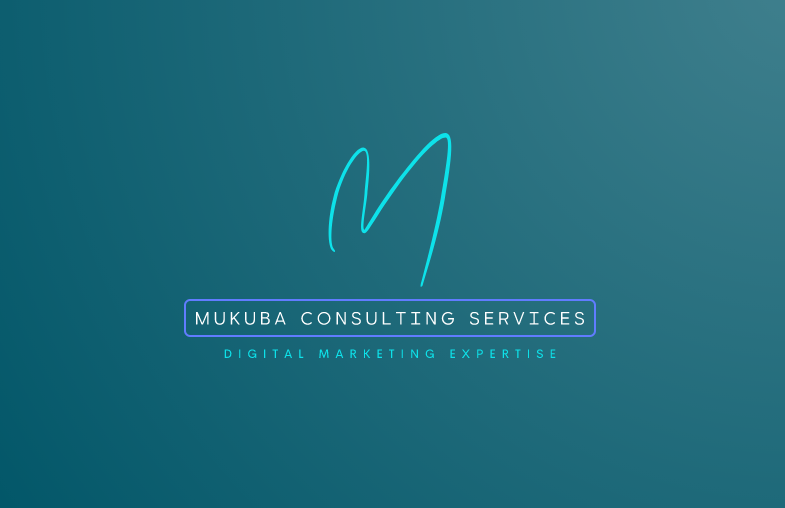Performing rigorous competitor analysis is a crucial activity for any business seeking to gain an edge. With so much competition online, deeply understanding your rivals’ strategies across every aspect of their digital presence is key to staying ahead.
This comprehensive guide outlines a structured methodology to thoroughly analyze competitors across multiple dimensions, uncovering actionable insights to build competitive advantage.
Step 1: Identify Your Key Competitors
The first step is identifying who your main competitors are across these four categories:
Direct Competitors
These companies offer nearly identical products or services targeting the exact same customer needs. For example, Pepsi and Coke battling for cola drinkers.
Make a list of your 3-5 closest direct competitors. These rivals likely come up frequently in sales conversations or customer feedback. Consider both long-standing competitors as well as new entrants aiming for your customers.
Indirect Competitors
These serve the same general customer demographic or solve similar needs, but through slightly different products or services. For example, while not direct rivals, Uber and Lyft compete indirectly for riders needing convenient urban transportation.
Indirect competitors force you to clearly articulate your differentiation. Identify 3-5 major indirect alternatives your customers could select instead of you.
Large Competitors
The dominant market leaders with significantly more brand recognition, resources and distribution. For example, a niche retailer competing with giants like Jumia or Kilimall.
Research 1-2 leading “category killer” competitors that may be difficult to unseat. Consider how you can leverage strategic agility to carve out an advantage.
Small/Niche Competitors
These are specialized newcomers finding innovative ways to compete. For example, a farmer’s market produce stand competing with national grocery chains.
Identify 1-2 emerging competitors using niche strategies like hyper-localization or specialization. Look for opportunities to preemptively address competitive threats.
Compiling this initial competitive set across those four areas provides a well-rounded view of the competitive landscape. Remember to look at both local and national competitors.
Revisit this list quarterly – new competition can emerge rapidly, especially online. With your core set defined, you can dive into multi-layered analysis across key areas.
Step 2: Competitors Analysis Websites In-Depth
The competitor website audit is one of the most enlightening analyses to conduct. Thoroughly comb through each high-priority competitor’s website, evaluating:
Content Strategy
- What topics and keywords are they targeting content around?
- How in-depth, well-researched and optimized is their content?
- Is content kept fresh and frequently updated?
- How could your content improve or expand on theirs?
Gauge content gaps or deficiencies you could capitalize on. Identify content level-up opportunities in underserved topics where you can beat competitors in SERP rankings.
Site User Experience
- How intuitive and seamless is site navigation?
- Are there any pain points or friction during key tasks?
- How optimized is site speed and mobile experience?
- Could better information architecture or features improve UX?
Uncovering UX flaws provides opportunities to better serve customers with a frictionless, intuitive site optimized for conversions.
Design, Branding and Aesthetics
- Does the design clearly communicate brand positioning?
- Is the interface modern, clean and visually appealing?
- How does site presentation compare aesthetically to your brand?
While superficial, poor site design can hurt credibility and trust. Note creative or experiential elements you could integrate to differentiate.
Messaging and Value Propositions
- What unique value do they promise customers?
- How do they describe their market differentiation?
- Is messaging aligned across site pages and assets?
Evaluate if competitors’ messaging is clear, consistent and compelling. Identify gaps to better showcase your unique advantage.
Conversion Optimization
- How effective are calls-to-action at driving conversions?
- Do they utilize exit intent popups, sticky bars or other tactics?
- Are lead gen offers and onboarding flows optimized?
Look for any spammy tactics to avoid, while taking inspiration from high-converting flows guiding visitors to become customers.
Technical SEO Optimization
Using tools like SEMRush or Google Lighthouse:
- Evaluate site speed, mobile-optimization, security
- Check for indexing issues, proper metadata, alt text usage
- Audit internal linking structures and URL optimization
- Analyze backlink profiles and domain diversity
Comparative technical audits reveal optimization gaps and areas to improve ranking potential.
Conducting thorough website reviews illuminates many strategic opportunities to outperform competitors online. Add relevant findings into a living doc for continuous optimization.
Step 3: Audit Marketing and Advertising Strategies
Expanding beyond just websites, comprehensively analyze competitors’ broader marketing and advertising across channels:
Search Engine Marketing
- What keywords are they targeting paid search ads around?
- How do ad copy, offers and landing pages compare?
- What does paid search budget allocation reveal about priorities?
Seeking SEM blindspots you can capitalize on? Benchmark your paid search performance against top competitors.
Social Media Marketing
- What content performs best on different social platforms?
- How effectively do they leverage each network’s ad offerings?
- How strong are calls-to-action and conversion paths from social?
Audit social content and ads for inspiration. Identify networks where you can grow share of voice.
Content Marketing & SEO
- What types of content development do they invest in most?
- Which content promotions channels show strongest returns?
- How can your content improve on or outrank theirs?
Evaluate gaps in competitor content strategies to strengthen your own efforts.
Email Marketing
- What does their signup flow and email onboarding look like?
- How effective are email content, design, cadence and calls-to-action?
- Where could your email nurturing funnel improve on theirs?
Sign up to competitors’ lists to gather list-building and nurturing tactic inspiration.
Offline Marketing
- What traditional advertising channels like print, radio, TV do they use?
- How do offline strategies integrate and cross-promote with digital?
- Could untapped offline channels expand your reach and awareness?
Seek media partnerships, sponsorships or other offline channels competitors command that you could gain exposure in.
Analyze the full cross-channel marketing mix for advantageous areas to out-execute competitors through smarter budget allocation and creative testing.
Step 4: Audit Social Media Presence
Diving into competitors’ social media specifically often surfaces fresh opportunities:
- How many followers/engagement do they have on each network? Does their audience overlap with your own?
- What types of content do they post? Look for any content gaps.
- When do they post? Analyze for best times to engage followers.
- How do they interact with followers and handle customer service?
- Do they run social contests, hashtag campaigns or other promotions?
Follow competitors on your target social platforms, taking notes on content, engagement practices and ad strategies to inform your own efforts.
Step 5: Evaluate Customer Reviews and Ratings
Appraise competitors through the lens of their customers by analyzing reviews and ratings on platforms like:
- Google Business Profile
- Yelp
- Play/App Stores
Look for recurring themes around:
- Average star ratings over time – where do competitors excel or fall short?
- Common “pros” and “pains” frequently cited
- How professionally and effectively do they respond to complaints?
- The quantity and cadence of new reviews – are customers consistently engaged?
Online reviews provide unfiltered customer feedback to benchmark product/service satisfaction against. Act on opportunities revealed through monitoring.
Step 6: Audit Organic Keyword Rankings
Gauging competitors’ SEO prowess sheds light on new opportunities:
- Research top-ranking keywords for each competitor locally and nationally using SEMrush, Ahrefs or Moz.
- For shared target keywords, analyze ranking history and traffic estimates using Google Search Console.
- Review technical health and backlink profiles – where can you surpass competitors’ efforts?
Seek rising keywords they rank for where you could compete and carve out rank. Identify site optimization and link-building strategies to emulate.
Step 7: Analyze Paid Search Efforts In-Depth
Paid search marketing represents a crucial competitive battleground. Auditing what your leading rivals are doing in this area provides multiple advantages:
Evaluate Keywords Targeted
- Use keyword research tools like SEMrush, Ahrefs or SpyFu to see the specific keywords competitors are bidding on Google Ads and Microsoft Ads. Look for gaps in their targeting you could capitalize on.
- Analyze if competitors are focused more on commercial transactional keywords or informational research keywords. What does this reveal about their strategy?
- For local competitors, look at the geo-modified keywords they target to understand their geographic prioritization.
- If you share any high-value keywords, examine the ad auction insights over time to estimate competitor budgets allocated toward those terms.
Assess Ad Copy
- Review the ad copy competitors use for text, display and shopping ads across devices. Analyze what messages resonate most with clicks.
- Look for opportunities to improve on competitor ad messaging with better targeting, emotional appeals or value propositions.
- Check if competitors are testing different ad copy against each other for the same keywords. What can testing strategies be gleaned?
Evaluate Landing Pages
- For top-performing ads, click through to analyze the landing page experience. Is it optimized for conversions?
- What forms, offers or content is presented on competitor landing pages? How could you match or improve?
- Look at landing page load speed, mobile optimization, layout and overall quality for additional competitive insights.
Benchmark Campaign Structure
- Browse through competitors’ campaign dashboards and ad groups to identify how they structure accounts across match types, devices, regions and more.
- Note strategies around dayparting, audience targeting, placements, devices and other tactics to apply lessons learned.
- Analyze integration between paid search and other channels through tracking parameters and landing pages.
Estimate Budget Allocations
- Use impression or click volume estimates to deduce budgets competitors dedicate across keywords, products and campaigns.
- Look for outsized budgets in certain categories that reveal high priorities. Consider reallocating your own budgets to compete in high-value areas.
- If disclosed publicly, benchmark your paid search ROAS against competitors’ demonstrated performance.
Carefully evaluating the auction intelligence, ad creatives, landing pages and campaign structure of paid search leaders provides an invaluable competitive playbook to enhance your own PPC efforts. Master competitors’ strategies and then innovate beyond them.
Step 8: Evaluate Service Metrics
For service businesses, look to gather key performance indicators like:
- Average project/request turnaround or response times.
- Customer satisfaction or NPS scores if published.
- Portfolio examples, case studies and ROI data points.
- Pricing models and packaging strategies.
- Size of customer service teams and resources.
Determine competitive benchmarks for turn times, satisfaction, pricing and resourcing to inform operational optimization. Seek areas lacking parity to better cater to customers.
Step 9: Set Up Competitive Monitoring
Treat competitive analysis as an always-on process, not just a one-off task. Set up monitoring to stay on top of competitor movements:
- Mention-monitoring alerts on key competitors using Google Alerts or Mention
- Social listening for competitor-related discussions among your audience groups
- Regular check-ins on previously assessed areas to spot strategy shifts
- Monitoring news of funding events, executive changes, new products, lawsuits, etc.
Proactively keeping tabs minimizes chance of being blindsided by competitive attacks. Look for trends over time around spending, new customer segments or geographic expansion.
Step 10: Translate Insights Into Action
The true value of competitor analysis comes from synthesizing insights into strategic actions:
- Make a capabilities gap assessment to address weaknesses
- Create a competitive SWOT analysis to inform planning
- Build on competitors’ ideas with your own twist or enhancements
- Develop new positioning to capture missed audiences
- Shift budget and priorities towards high-yield areas
- Set process improvement goals based on performance benchmarks
Continuously evaluating competitors, while hard work, keeps your competitive strategy razor sharp. Never get complacent. Employ these tips diligently as just one component of ongoing market research and customer understanding to sustain competitive advantage.
Out-executing across every facet of digital marketing fuels success – optimize relentlessly informed by objective competitive intelligence. With the right competitive mindset, your brand can avoid disruption, enhance differentiation and ultimately prevail against close rivals.
Conclusion
Taking a deep look into competitors through their websites, marketing efforts, customer experiences and performance metrics provides a treasure trove of strategic insights.
With regular monitoring, competitive intelligence can help inform ongoing improvements, highlight opportunities for differentiation and prepare defenses against innovative new entrants.
Staying ahead through analysis keeps you continuously innovating versus simply reacting to change – a key component of sustainable success in today’s digital business landscape.




[…] Competitor strategy shifts and newly effective tactics are identified. […]